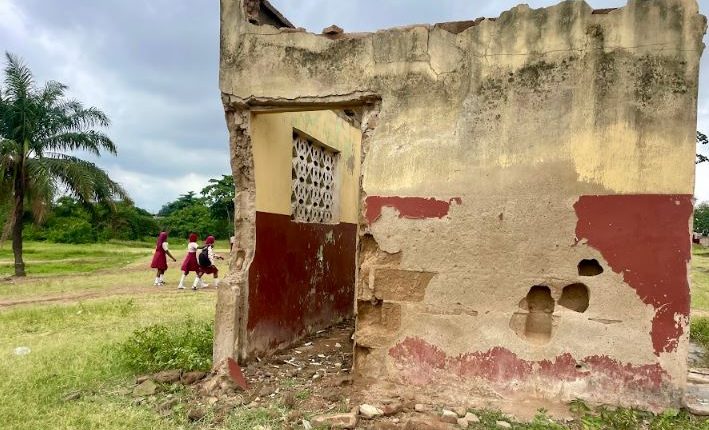In Oyo, Infrastructure Deficit Contributes to Absenteeism Among Secondary School Girls
During visits to several schools, many female students admitted to deliberately limiting their water intake or holding in urine for hours to avoid using filthy or non-existent toilets, behaviours with profound medical implications. Oyo School.
It was a rainy Monday morning in May when 14-year-old Aisha Oloyede discovered she had started her period, unexpectedly and publicly. She hadn’t noticed the bloodstain on her skirt until classmates began to whisper. Then came the laughter from the boys behind her, as she stood up to answer a question in English class about adjectives.
Overwhelmed with shame, the 14-year-old quietly gathered her books, carried her lunch bag and returned home, soaked in menstrual blood. “I covered my stained skirt with my school bag,” she recounts. “I wanted to clean myself up, but there was no toilet [and water facility in school] to wash the stain away a bit.”
Aisha is now in her first year of Senior Secondary School at Community Grammar School, Airport, in Ibadan, Oyo State. Though three years have passed since that incident, the trauma lingers. Each month, when her period arrives, Aisha stays home from school for up to five days. “I don’t want to go through that ridicule again,” she says, her head bowed. “I’d rather stay home.”
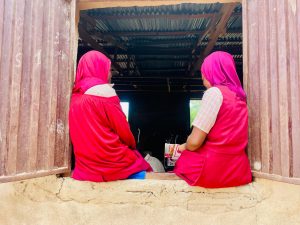
Across Oyo State, a silent crisis is unfolding in public secondary schools: poor water, sanitation, and hygiene (WASH) infrastructure is driving thousands of girls out of classrooms during their menstrual periods. With no safe spaces to manage menstruation and little institutional support, many female students are forced to miss school for days each month, a practice that contributes to chronic absenteeism, educational disadvantage, and, in some cases, early dropout. While government budgets for education have grown significantly in recent years, the on-ground reality reveals a troubling disconnect between spending and impact.
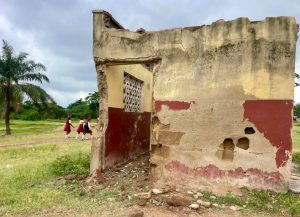
In 2023, the United Nations Children’s Fund (UNICEF) revealed that 74 per cent of schools within Oyo lack access to basic sanitation services. Aisha’s school is among those affected by this grim reality.
Just a stone’s throw from Aisha’s school lies Community High School, located in Airport Alakia, Oyo State. Although its toilets are unhygienic and are often abandoned by the students, they are still a step above those at Aisha’s school, which has none at all. Girls at the school disclosed that the few usable toilets are reserved for teachers.
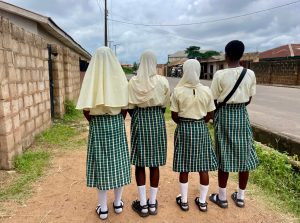
Several female students at Community High School, Airport Alakia, admitted to taking self-imposed “menstrual leave” from school, much like the exemption they observe from religious obligations during menstruation in their Islamic faith.
Raheemot, Aishat’s classmate who also skips school during her period, revealed that the Parents and Teachers Association had contributed ₦1,000 each towards building a toilet at Community Grammar School. However, the funds were diverted. “The teachers said the money was used to ‘repair’ one of our buildings to prevent it from falling on our heads during class sessions,” she says.
Stories like Aisha’s and Raheemot’s echo findings by the United Nations Educational, Scientific and Cultural Organisation (UNESCO), which estimates that one in ten girls in Africa miss school during their menstrual cycle.
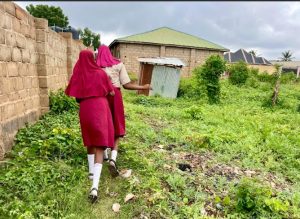
If public schools in proximity to Oyo’s international airport are in such poor condition, one can only imagine the situation in more remote areas. To find out, we visited public secondary schools in Itesiwaju and Iseyin Local Government Areas (LGA).
Adedotun Popoola, a male student at Community Grammar School in Ipapo, under Itesiwaju LGA, says he defecates in nearby bushes without hesitation. This is standard practice in the school. “We find our way; girls are the ones who find it more difficult,” he adds.
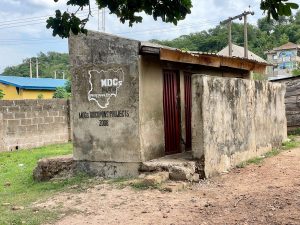
Similarly, at Ansarudeen Grammar Schools 1 and 2 in Iseyin LGA, students’ toilets are locked due to a lack of water. The only option is a decrepit toilet behind the school, littered with dirt, empty water sachets, and human waste.
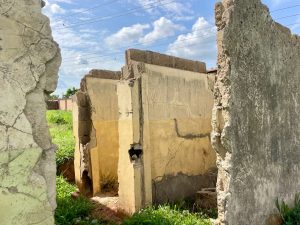
Seun, a student at Ansarudeen Grammar School, says she still comes to school during her period, but she’s unable to concentrate well due to pain and fear of getting stained. “My friends and I move to a corner to change pads, but girls using rags wait till they get home to clean up, since they need water to wash off the blood,” she says. Seun also complained about the lack of mosques, a laboratory, and a library.
“The way out is ‘shot put,” one teacher at Community Grammar School remarked when asked about toilets.
While “shot put” is traditionally a sport involving the throwing of a heavy ball, in the Nigerian context, it has a disturbing meaning: the practice of defecating into a plastic bag and throwing it into the bush or drainage. Among students, this has become a coping mechanism in the absence of functional toilets, one that fuels the growing problem of open defecation across Oyo State.
During visits to several schools, many female students admitted to deliberately limiting their water intake or holding in urine for hours to avoid using filthy or non-existent toilets, behaviours with profound medical implications. Medical News Today warns that regularly retaining urine can increase the risk of urinary tract infections (UTIs), and several studies highlight the long-term health risks of such practices.
The deficit in WASH infrastructure in Oyo’s public schools is severe. Many schools have no toilet facilities at all, and the available ones often exceed recommended usage ratios: 1:25 for girls and 1:50 for boys. Research indicates that access to water and sanitation in these schools is below 20 per cent, significantly lower than global averages.
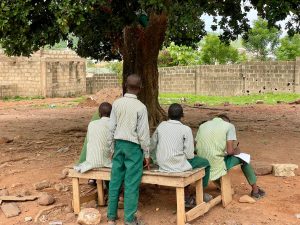
Notably, the education sector has received the largest share of Oyo State’s budget over the last five years under Governor Seyi Makinde’s administration.
In 2020, the sector received 22.37 per cent of the ₦208.8 billion budget. The allocation rose to ₦56 billion in 2021, ₦54.1 billion in 2022, ₦58.2 billion in 2023, ₦90 billion in 2024, and a proposed ₦145 billion in 2025, a clear upward trend.
Yet despite these substantial figures, the infrastructure deficit remains largely unaddressed.
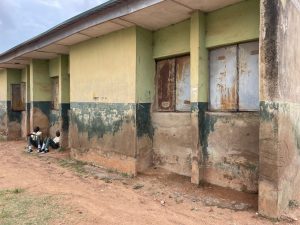
According to a Communication Associate with Paradigm Leadership Support Initiative, a non-profit encouraging civic participation with Nigeria’s public audit system, Taiwo Sunday, “There is a lack of oversight, strategic planning and effective implementation of the budget allocation,” says He adds that the absence of public audit reports has made it difficult to verify how the funds are used.
“There is also no evidence of performance audits being conducted on education-related programs, projects, or policies in the state. This makes it difficult to assess whether government interventions in education are achieving their intended outcomes or providing value for money,” he concludes.
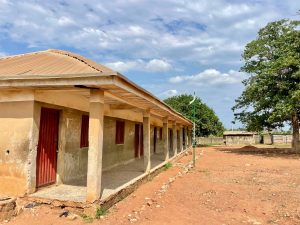
In pursuit of knowledge regarding the fund disbursement made for educational infrastructure programs, a Freedom of Information Act (FOIA) request dated May 30, 2025, was submitted to the state’s Ministry of Education, Science, and Technology, seeking details about educational sanitation infrastructure.
At the time of this report, the ministry had yet to respond, a violation of the FOI Act 2011, which mandates a seven-day response period. Oyo State has long been criticised for excluding citizens from budgetary and financial decision-making processes. A 2024 BudgIT report ranked Oyo lowest in fiscal transparency among Nigeria’s 36 states.
When we contacted Suraj Abiodun, the Special Adviser for Education to the Oyo State governor, via a phone call, he stated that efforts are being made to address the infrastructure deficit affecting public secondary schools across the state.
“We are currently renovating about 40 schools across the local governments. The proposed rehabilitation comes with boreholes, toilets, solar and furniture,” he added. Mr Abiodun further stated that the rehabilitation project is in phases.
However, this represents a small fraction of schools in need of renovation within the state, and none of the five schools we visited were included.
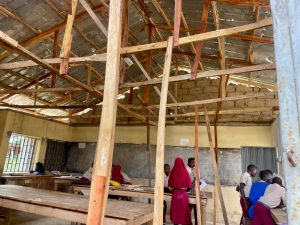
The lack of toilets doesn’t just drive absenteeism; it fuels school dropout rates. According to recent data, Oyo has an out-of-school rate of 20.9 per cent, double the national average of 10.05 per cent.
Experts say the solution lies in Gender Responsive Education Sector Planning (GRESP), a framework that integrates gender considerations into the planning and delivery of education services.
“Toilets are the only private spaces that girls have in schools and most low-income homes,” says Sola Fagorusi, Executive Director of One Life Initiative, which promotes GRESP in Nigeria. “Without them, girls face constant anxiety. Is it safe? Can I change my pad? Is there water to wash up? Is there a mirror to help me put myself together again?”
Fagorusi also called on the state government and other stakeholders to identify schools managing WASH facilities effectively and incentivise those practices. “We need to create recognition systems for schools that find innovative ways to manage their WASH infrastructure effectively,” he added.
For Aisha and many girls like her, the school environment remains a place of anxiety rather than learning, a space where the natural reality of menstruation becomes a monthly punishment. Until the government moves beyond budget promises to deliver tangible WASH infrastructure, thousands of students in Oyo will continue to fall through the cracks, not because they lack the will to learn, but because their schools fail to meet their most basic needs.
This report was produced with support from Education as a Vaccine (EVA), a member of the Malala Fund Joint Action Group (JAG), as part of efforts to promote transparency and accountability in Oyo State’s education sector.
Editor’s note: this report has been updated from the previous version published in May 2025.
Join our WhatsApp channel: https://whatsapp.com/channel/0029VaAqC8AGpLHWdULTNq0y

